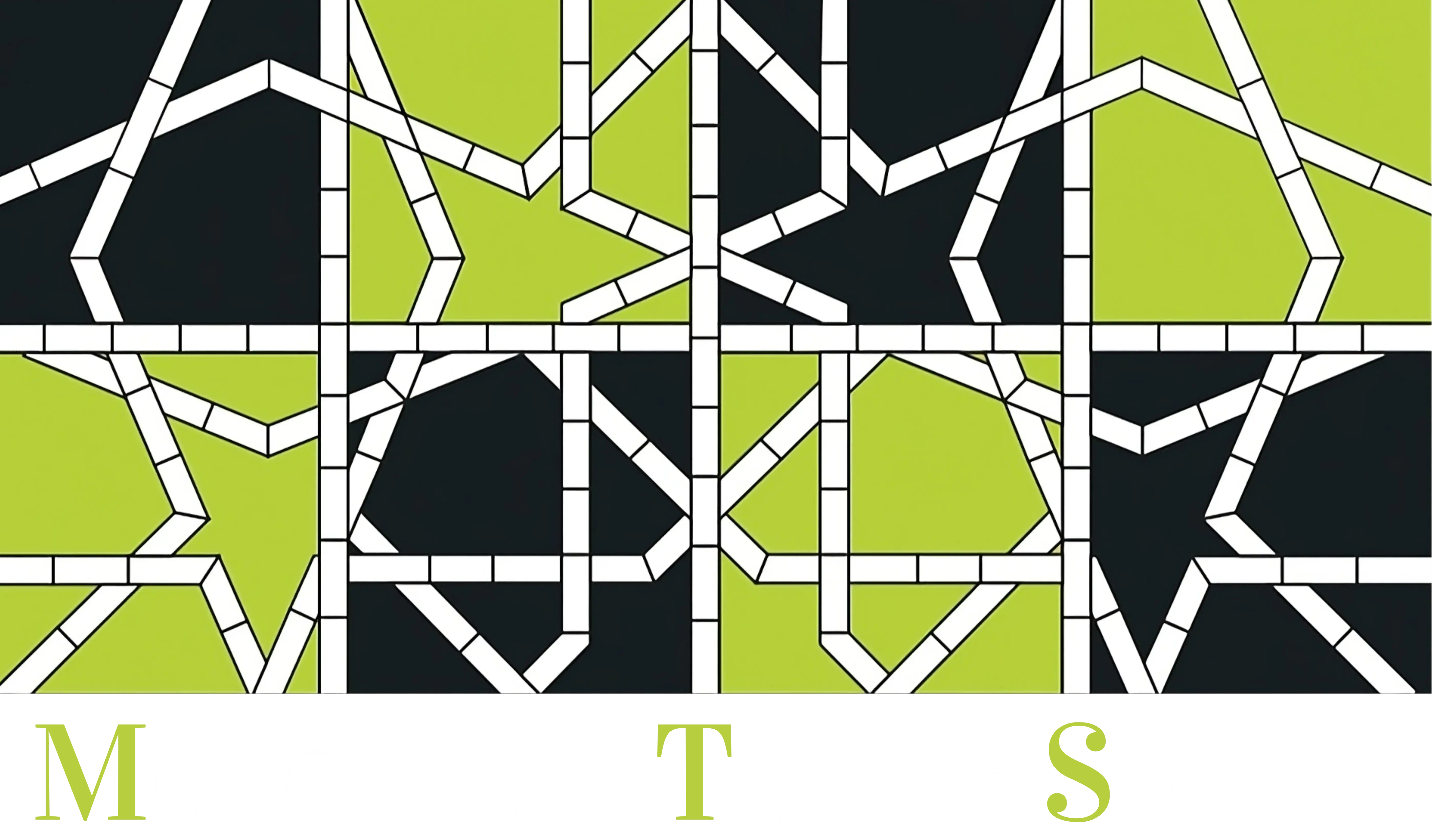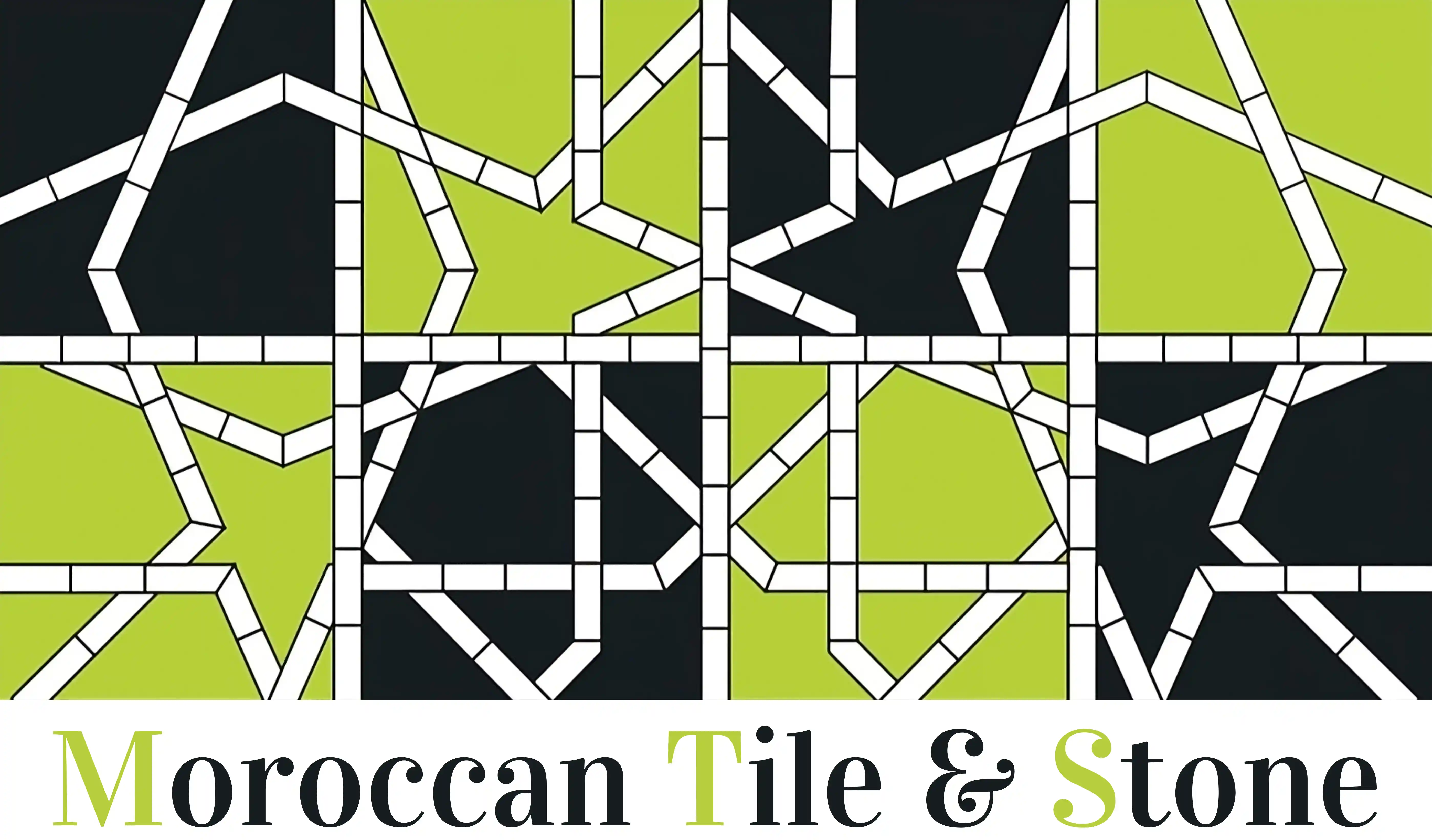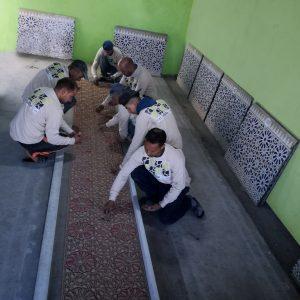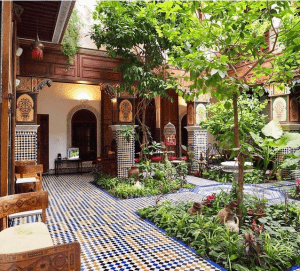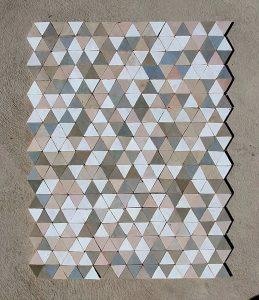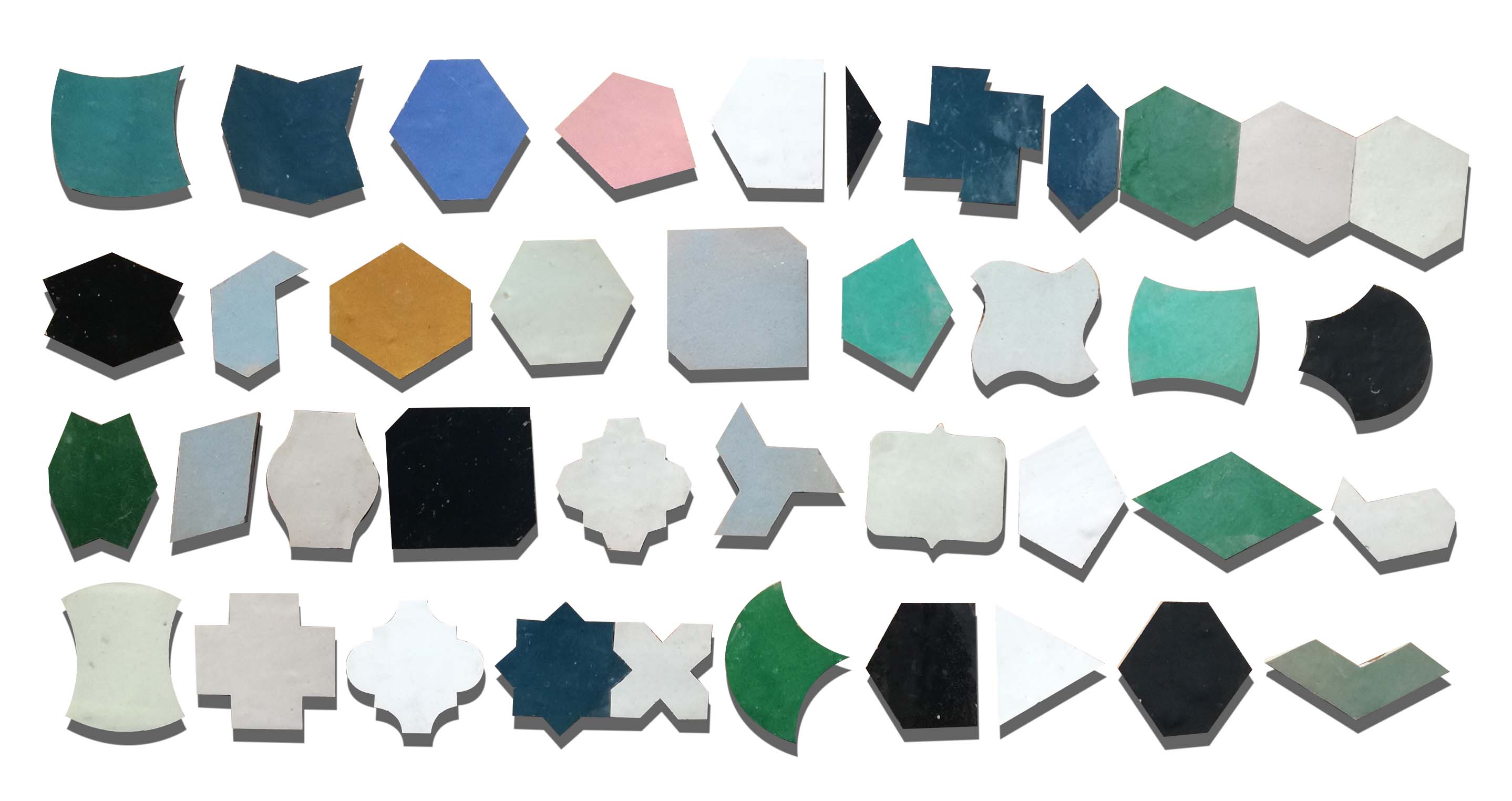The beautiful art of Zellige
Zellige (sometimes called Zellij or Zelige) is a form of a beautiful Arab art that occupies an important place in Moroccan architecture. The attractive tiles are made of geometric tiles that are attached to the plaster floor to create surprisingly intricate patterns.
The Role of Mathematics in Zellige's Geometric Patterns
There are countless combinations of Moroccan mosaic patterns, including squares, triangles, stars, diamonds, polygons and crosses that are arithmetically connected in neat and precise mosaics. To some it may sound strange, math and art, but math is used in many creative arts, from music to sculpture, and is an effective tool for creating a visual masterpiece.
Zellige's Use of Geometric Patterns in Islamic Art
Patterns and shapes also count. Islam forbids the representation of living things, so that geometric patterns were created to give color, decoration and meaning to the mosaic. Zellige offers the possibility of creating individual masterpieces. Mosaic, which creates an almost hypnotic effect and can stimulate meditation and religious contemplation.
In addition to the pattern, color also played an important role in Zellige's art, and the craft itself was associated with a number of traditional colors. Moroccan tiles are often associated with the colors brown, white, green, saffron, blue and black. The four elements of fire, water. Air and earth are represented by these colors.
Today, Moroccan tiles decorate the walls of elegant hotels and houses, decorate hammams (hotel complexes), add sophistication to royal palaces and illuminate swimming pools and fountains. If you're lucky enough to go to Granada, be sure to visit the Alhambra Palace to see the magnificent Zellige in all its splendor. If you are visiting Fez, you should also visit the Medersa El Attarin and the Nejarin Fountain. Other excellent examples of Zellige include: the tomb of Moulay Ismail in Meknes, Meders Ben Yusuf in Marrakech and the Kasbah Teluet (offering a more recent example of Zellige from the 19th century).
The modest description of "Moroccan tiles" does not really do justice to Zellige's art. Zellige should be promoted as a unique and traditional art, rich in history and traditions. It has long been a symbol of sophistication and represents wealth and power. Zellige has a real tone and is associated with those who are considered to be of high rank. It is clear that this Moroccan tile corresponds to its name "Prince of the tiles"!
A Notable History:

Moroccan tiles appeared in the 10th century and were later inspired by Roman and Byzantine mosaics. Colors were less bright and not many. If you were in the white and brown market, you'd be lucky.
The 11th century announced the creation of geometric patterns, such as star polygons. The art of zelige became very popular in the Maghreb (North-West Africa) and Andalusia (or Spain, as we now call it) during the Azuligo (Spanish-Moroccan) period.
The hands of time passed and led to a development in Zleje's career. In the 14th century, the Nasr and Bahr dynasties treated and consolidated art by adding green, blue, and yellow Moroccan tiles.
With the increasing popularity of colors, Moroccan red tiles were added to the dynamic mix in the 17th century, and innovation continued.The 20th century announced the importation of glass, which was combined with traditional colors and made a wider selection.
Zellige and the Spanish Colonization of South and Central America
Over the years, ancient Moroccan art has been accepted and accepted in many places, including Samarcland and Córdoba. However, Zillig did not come to America. With the Spanish colonization of South and Central America, skilled craftsmen lacked the production of an authentic Moroccan court. Instead, the "Spanish court" became popular in Cuba, South America, and Central America. Despite being hand-drawn concrete tiles with traditional background, they are not comparable to Zellige.
In Andalusia and Morocco, the art of Zelliges gained popularity and was lovingly cared for. As a result, the Moroccan court has become almost synonymous with the architecture of the Maghreb. It is found in both interior and exterior designs that are full of intricate and dynamic patterns.
Historically, the "palace prince" Zlaij has always been popular with the wealthy. However, decorative concrete tiles were offered as a cheaper alternative, but they couldn't match the beautiful nature of the real Zellige. Nowadays, Morocco is the center of the craft, with the city of Fez playing the role of the home of some of the most experienced craftsmen who make great Moroccan tiles, handcrafted according to the centuries-old tradition of zellige, and the results are impressive.
Zellige is an ancient art form that requires the use of traditional methods, and there are no shortcuts. It is hard to believe that Zellige starts with a modest piece of scorched earth. The best business plan is the Moroccan region of Fez.
The Cutting Process: Handcrafted Tiles by Skilled Craftsmen
The floor is mixed with water and a pigment is added to give the tiles a brilliant color. The teacher uses a mixture of hands and hammers to knead and treat the floor to create tiles of the desired size. Each side of the tile is approximately 4 inches long and the thickness of the tile is approximately 0.5 inches. The tiles are then placed in the natural heat of the sun, where they are left to seal for a time before baking in a special oven. The color of the tiles determines the temperature that is cooked. When finished, the tiles are removed from the oven and laid.
The next step in this process is to draw a design in preparation for cutting tiles. To facilitate this work, the Zellige model was designed as needed. The purpose of the form is to ensure that the shapes remain consistent and that the tiles are fully utilized (to cut as many pieces as possible). The pattern is placed on each tile and the pattern is carefully drawn by hand. This task is often done by those who are trained to do it.
The next step is the cutting process. This means that the tiles are fed to the "cutter". This does not include unusual machines or production processes. "Cutter" tends to sit next to a pile of rocks on the floor, it's actually his workspace. The table you cut is actually a piece of iron or a large solid stone. Both are well suited as a base on which the tiles can rest safely before cutting.
The Importance of Zellige in Moroccan Architecture.
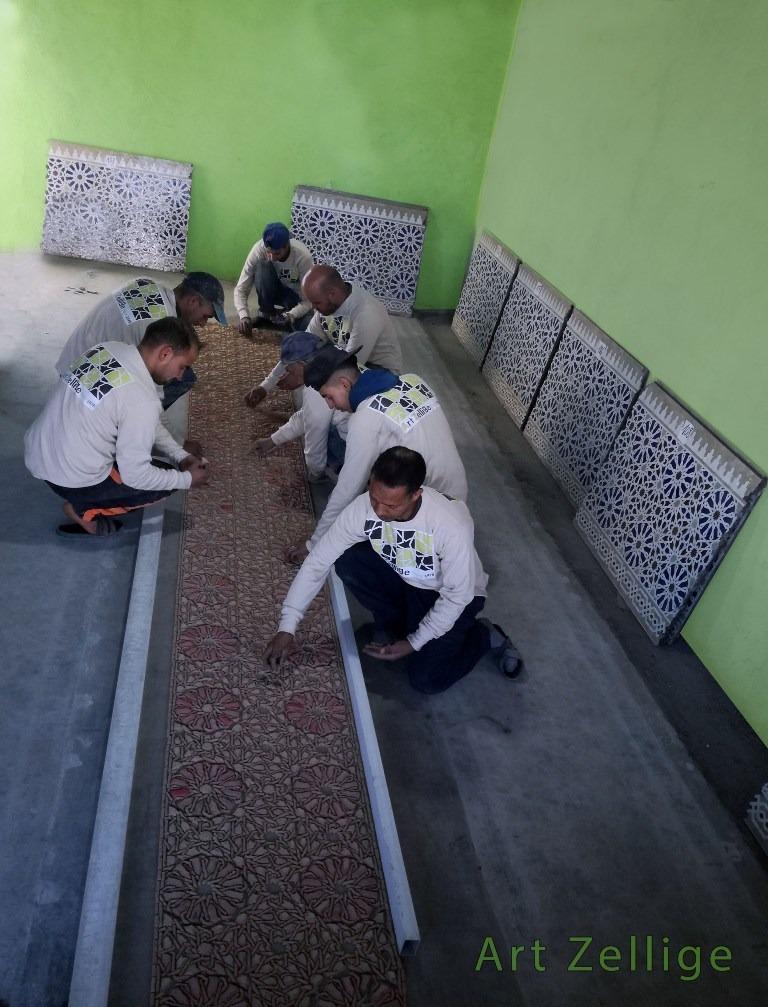
Morocco reminds us of a steep mountain range and vast areas with vast deserts and long coasts that extend along the Atlantic Ocean and the Mediterranean Sea. When Morocco aspires to a sophisticated natural scene, it offers a variety of sensory sensations, reinforced by the dynamic characteristics of the interior and exterior design. Maghreb architecture is already emerging among the crowds and is becoming very popular all over the world. The main examples are in Morocco, but during your trip to Europe and the United States (among others), you will likely encounter colorful and sophisticated patterns that highlight Moroccan architecture and culture.
Think of intricate carved patterns and doors with carved arches. Horseshoes (which can also be called Moroccan arches and holes) are generally large and round. It is synonymous with Moroccan design and is generally installed majestically in a narrow or direct entrance or in a crack in the wall. You will also find beautiful domes and a beautiful interior courtyard. The interior is decorated with bright and colorful fabrics that create a radiant atmosphere. We should not forget the star of our show: the luxurious Zellige. The Moroccan court is simple in its ability to create exciting patterns and interact with other materials.
It looks good unlike the elegant look of limestone, marble and granite scents. Bright, shiny words come to mind and lights up projects in the room. If you are using Moroccan style, there is no place for a boring day.
